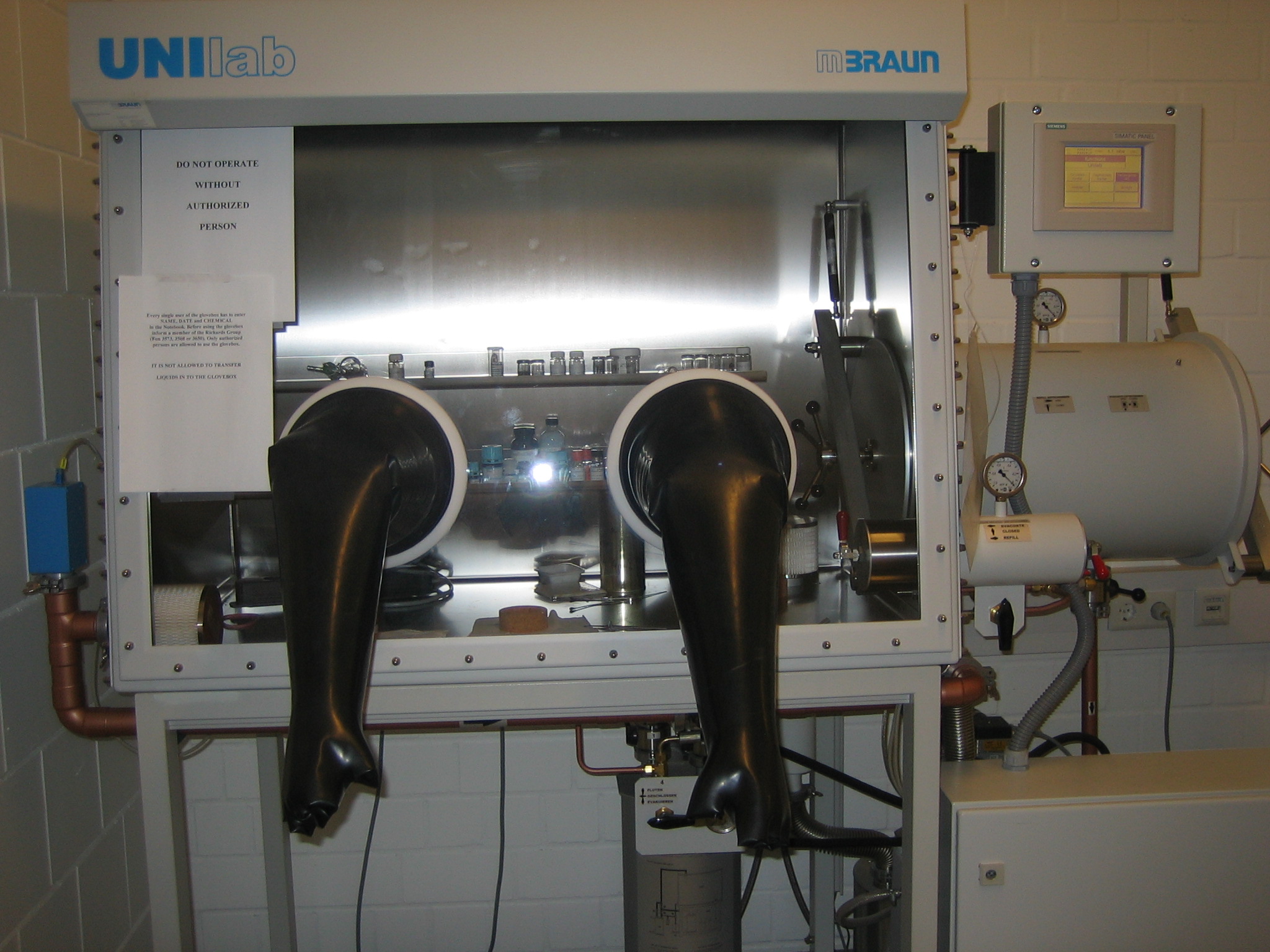- Glovebox
Infobox Laboratory equipment
name = Glovebox
caption = A common form of glovebox
acronym =
other_names =
uses = Inert atmosphere
inventor =
manufacturer =
model =
related =Desiccator Schlenk line A glovebox (or glove box) is a sealed container that is designed to allow one to manipulate objects while being in a different atmosphere from the object. Built into the sides of the glovebox are twoglove s arranged in such a way that the user can place his or her hands into the gloves and perform tasks inside the box without breaking the seal or allowing potential injury. Part or all of the box is usually transparent to allow the user to see what is being manipulated. Two types of glove boxes exist: one allows a person to work with hazardous substances, such as radioactive materials or infectious disease agents; the other allows manipulation of substances that must be contained within a very high purity inert atmosphere, such asargon ornitrogen .Inert atmosphere work
The argon in a glove box is pumped through a series of treatment devices which remove
solvent s,water andoxygen from the gas. Heatedcopper metal (or some other finely divided metal) is commonly used to remove oxygen, this oxygen removing column is normally regenerated by passing ahydrogen /nitrogen mixture through it while it is heated, thewater formed is passed out of the box with the excess hydrogen and nitrogen. It is common to usemolecular sieve s to remove water by adsorbing it in the molecular sieves' pores. Such a box is often used byorganometallic chemists to transfer dry solids from one container to another.An alternative to a using a glove box for air sensitive work is to employ Schlenk methods using a
Schlenk line . One disadvantage of working in a glove box is that organicsolvents will attack the plastic seals, as a result the box will start to leak andwater andoxygen can then enter the box. Another disadvantage of a glove box is that oxygen and water can diffuse through the plastic gloves.Inert atmosphere glove boxes are typically kept at a higher pressure than the surrounding air, so that any microscopic leaks are mostly leaking inert gas out of the box instead of letting air in.
Hazardous work
At the now-deactivated
Rocky Flats Plant , which manufacturedplutonium triggers, also called "pits", production facilities consisted of linkedstainless steel gloveboxes up to 64 feet, or 20 meters, in length, which contained the equipment whichforge d and machined the trigger parts. The gloves werelead -lined. Other materials used in the gloveboxes included acrylic viewing windows andBenelex shielding composed ofwood fiber and plastic which shielded against neutronradiation . Manipulation of the lead-lined gloves was onerous work.Some glove boxes for radioactive work are under inert conditions, for instance at the ITU, one nitrogen-filled box contains an argon-filled box. The argon box is fitted with a gas treatment system to keep the gas very pure to enable electrochemical experiments in molten salts. [http://itu.jrc.ec.europa.eu/index.php?id=173&type=100]
Glove boxes are also used in the biological sciences when dealing with live pathogens.
Glove boxes used for hazardous materials generally are maintained at a lower pressure than the surrounding atmosphere, so that microscopic leaks result in air intake rather than hazard outflow. Glove boxes used for hazardous materials generally incorporate
HEPA filters into the exhaust, to keep the hazard contained.ee also
*
Desiccator s are used for storing chemicals which are moisture-sensitive, but do not react quickly or violently with water.
*Schlenk line s are used for manipulating oxygen- and moisture-sensitive chemicals as well.External links
*
* [http://www.gloveboxsociety.org American Glove Box Society]
Wikimedia Foundation. 2010.
